The Impact Of Straight Teeth On Oral Health
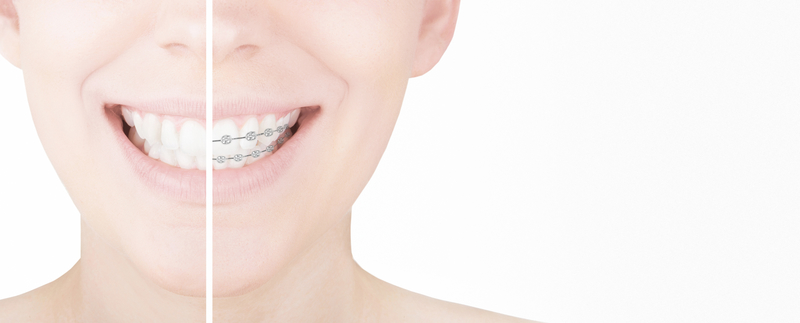
Many orthodontic patients use braces so that they can have straight teeth, but that’s not the only reason why orthodontic care is so important. Having straight teeth can minimize the likelihood of tooth decay and tooth loss while improving your bite, which affects your ability to chew and speak. Correcting crooked teeth can also improve your oral hygiene and strengthen teeth. Learn more about the positive effects that straight teeth can have on your oral health through this guide!
How Straight Teeth Can Help You
One of the main goals of braces is to create a straight smile and correct any orthodontic issues that may prevent teeth from remaining straight. While orthodontics does focus on straightening patients’ teeth, this is not the only purpose of receiving orthodontic care. Whenever a patient has malocclusion, or bad bite, caused by crowded or crooked teeth, daily oral hygiene can become a difficult task. Malocclusion can also stem from teeth that are out of alignment, or jaws that do not meet properly. Thumb sucking or accidents to the teeth can also cause malocclusion. As oral hygiene becomes more difficult to maintain, the likelihood of dental complications, such as tooth decay, periodontal disease, and tooth loss, increases. An improper bite that goes unaddressed can negatively affect chewing and speaking, and wear down tooth enamel. Correcting these problems is of utmost importance to your orthodontist as they seek to give you the best care possible. Orthodontic care that helps straighten teeth can decrease and ultimately eliminate the chances of any of these complications from arising. With straight teeth, patients can better brush and floss their teeth, which will help strengthen them, while easily monitoring any changes that may occur.
What To Expect With Orthodontics
As you begin your orthodontic treatment, there are a few tips that you should know to prepare yourself for what will be expected of you during your time with braces. Although there are some challenges with straightening adult teeth versus children’s teeth due to the pliability of the jawbone, modern technology allows any adult of any age the opportunity to correct crooked teeth with remarkable success. You will first meet with an orthodontist for an evaluation and orthodontics consultation to determine what option is best for your mouth. Any oral health issues, such as gum disease, will have to be resolved before you can begin treatment. Adults have a variety of options to choose from for their orthodontic care, with many discreet options, such as ceramic or clear braces, lingual braces, and Invisalign clear removable retainers, that are available for your needs.
For children, treatment is similar to that of adults and can start as early as the age of 7. Having an orthodontic examination early on can prevent the progression of orthodontic issues that are present and allow the orthodontist to monitor the development/eruption of teeth. Aesthetically-minded treatment options, such as incognito lingual braces, are available for young children who may be self-conscious about their orthodontic care. Most children and adults can expect treatment for 1-3 years, followed by a period of time in which a retainer will be used to keep teeth in their newly aligned positions. Regular dental and orthodontic visits will be necessary to track the progress of teeth and manage any plaque or tartar buildup that could accrue between teeth.
How To Keep Your Straight Teeth Healthy
Once you or your child finishes orthodontic treatment, it is important to continue certain oral health standards to maintain the health of your gums and teeth. Eating a healthy diet, with or without braces, while limiting the amount of sugary foods you consume, will prevent plaque that can stain or damage your teeth. Brushing with fluoride toothpaste and flossing each day will also prevent any plaque buildup, prevent cavities, and keep your teeth clean. Good oral hygiene is especially important for patients wearing braces because you are more susceptible to plaque buildup around brackets and underneath wires. For additional protection, consider using a mouth guard while playing any sports or activities that could damage your mouth, if hit. Creating a good oral health regimen before you start orthodontic treatment will help you have a healthy mouth during and once braces are removed.
For more information on the importance of straight teeth on oral health and what you can do to get the straight teeth that you want, call Belmar Orthodontics at (303) 225-9016! If you’re ready to change your smile for the better, our team is ready to help you reach that goal for you and the rest of your family!
Diastema: What Is It?

A gap between the teeth, called “diastema,” are common among many dental patients and can be found between any teeth in the mouth, but usually between the two upper front teeth. Why do these spaces develop, and what are the differences between a diastema in children versus adults? Diastemata develop through a variety of reasons, such as misaligned jaw bones, missing teeth, and thumb-sucking. Not all spaces can be prevented, but many can be adjusted through orthodontic treatment. If you have a diastema that you would like to have treated, learn what your treatment options are through this guide!
Changes in Orthodontic Care
Orthodontic treatment options have been revolutionized through modern technology and dental science. Poorly aligned teeth have been a nuisance for dental patients for hundreds of years, and orthodontic work was even performed on willing subjects dating back to the ancient Egyptians and the Romans. From crude metal bands to catgut, archaeologists have discovered that even ancient societies performed orthodontic care on patients in an effort to straighten teeth. For those suffering from malocclusion, or misalignment, a common practice for moving emerging teeth into their correct position was by regularly pushing them with the fingers, a practice that has long been outdated since the invention of custom-fit metal appliances in the 18th century. Eventually, orthodontics treatment evolved into the process that we see today: brackets being cemented to each individual tooth with a metal wire attached to cinch the teeth together. Options for invisible treatments, such as lingual braces or even Invisalign, further allow patients to choose how they straighten their teeth. While there are so many options to choose from to decide how to straighten our teeth, how our teeth first develop and erupt in our mouth is a separate process. Since every patient is different and will experience a variety of dental issues, some patients may face something called “diastema,” which can have certain dental complications and be caused by a variety of reasons. Understanding how diastemata form and what you can do to fix them can give you the freedom to be in control of your oral health and appearance.
Gaps Between Teeth
Many people across the world are born with a diastema, or a gap between their teeth. These spaces can form anywhere in the mouth, but are most commonly found between the two upper front teeth. Both children and adults can have a diastema, and many times a child’s diastema will disappear once their permanent teeth grow in. While some gaps are relatively small and barely noticeable, others can be quite large and can cause cosmetic issues for some patients. While relatively harmless, most patients who fix their diastema do it for aesthetic reasons.
There are a variety of reasons why a diastema develops. A mismatch between the size of the jawbone and the size of teeth that develops can cause gaps to appear, or even too small of teeth (or a missing tooth) can create spaces, as well. Sometimes a diastema can be caused by an oversized labial frenum. This part of the mouth is a piece of tissue that extends from the inside of your upper lip to the gum just above your upper front teeth. Occasionally, this will grow too much and pass between the two front teeth, causing a gap. Bad habits, such as thumb sucking, can also lead to gaps between the teeth as the movement of the thumb tends to push teeth forward, creating a gap. A diastema can also develop due to incorrect swallowing reflexes. Normally, the tongue will push against the roof of the mouth when swallowing, but some people’s tongues may push against the teeth, which causes separation. This is called a tongue thrust. Lastly, gaps can form from periodontal disease in which inflammation damages the gums and teeth, which can cause teeth to loosen and fall out, or decay.
Treatment Options
A diastema can result from a mixture of orthodontic problems, or it can develop on its own. Many people who fix the gap in their teeth do it for appearance, but for those patients who have missing teeth, they might need to have a dental implant or bridge inserted. More often than not, braces are needed to close the gap between teeth, no matter where the gap is located. Fixing a diastema affects the entire mouth structure, so braces will be installed on both the top and lower teeth for proper alignment. If your diastema is due to an oversized labial frenum, a frenectomy will be performed to help the gap close on its own. If there is any sign of gum disease, periodontal treatment will be needed first to restore gum health before any braces will be put on. See open bite symptoms and causes.
Keeping The Gap Closed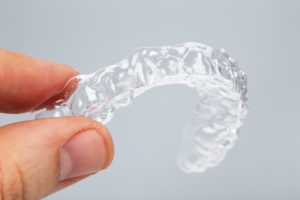
Spaces will tend to stay closed when done through orthodontic or dental repair. To prevent any gaps from developing in the future, make sure to wear your retainer that you will receive after treatment and use it according to your orthodontist’s instructions. For extra protection, your orthodontist might also splint (attach) the backs of the teeth to other teeth with composite and a wire to prevent them from moving. If you notice a space between your teeth or in your child’s mouth, contact your dentist for an evaluation to determine what kind of orthodontic treatment you might need. For more information on how to fix a diastema and improve your oral health, call Belmar Orthodontics at (303) 225-9016 to start improving your smile today!
Surgical Orthodontics
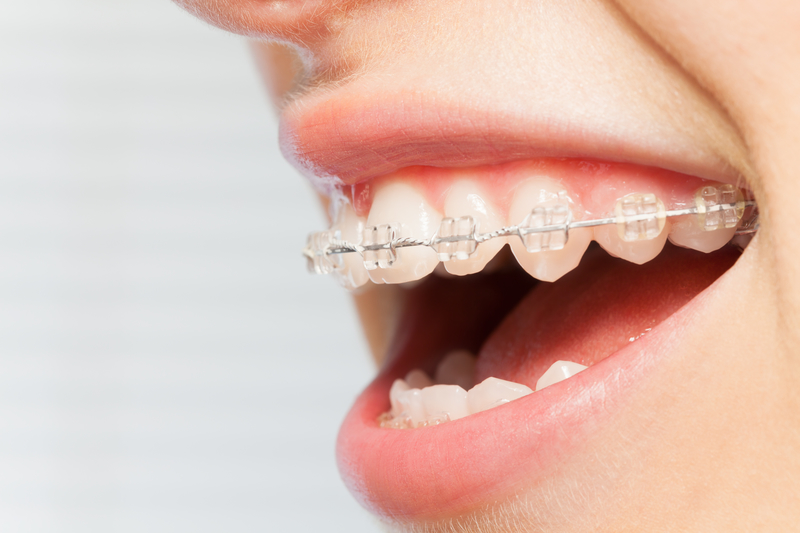
Surgical orthodontics is sometimes needed for those patients whose upper and lower jaws don’t align correctly and a proper bite cannot be achieved. Surgical orthodontics will change the alignment of your jaw, which will affect your teeth. Braces are normally involved in this process to correct teeth movement. Since this is a surgical process, there are many different options for patients to choose from to fix misaligned jaws. Find out whether you’re eligible for surgical orthodontics and what it can do to fix your smile!
What Surgical Orthodontics Entails
In some cases, surgical orthodontics is recommended for patients whose upper or lower jaws do not line up properly and thus cannot obtain a correct bite with orthodontics alone. Known also as jaw surgery or orthognathic surgery, this process involves correcting irregularities of the jaw bone and realigns the jaw and teeth to function together properly. Surgical orthodontics also can be used to fix aesthetic concerns about a patient’s profile or jaw shape/size. Since this type of orthodontic work involves correcting the alignment of your jaw, your teeth will most likely shift, as well, so braces are used in combination with this treatment.
Those patients who suffer from problems with their chewing, breathing, or speaking due to a misaligned jaw are prime candidates for surgical orthodontics. As mentioned earlier as well, patients who have aesthetic facial concerns can also benefit from these treatments to see what improvements can be made, after consulting with their orthodontist. The downside to treatment is that it cannot be performed until a patient’s jaw is fully formed, so for children and children who struggle with any of the aforementioned issues, they must wait to fully develop before any surgery can be performed. For males, jaw growth typically finishes at age 18, and for females it is completed earlier, at around 16 years of age.
What To Expect During Surgery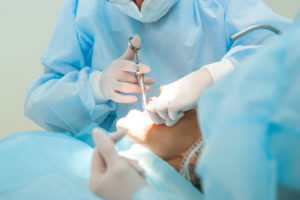
Surgical orthodontics include both pre and post-surgical phases in which treatment is tailored to the individual patient’s needs and jaw structure. Pre-surgery involves aligning your teeth and moving them into a more ideal position before surgery. In many cases, braces are put on 12-18 months prior to surgery to level and align your teeth in preparation for surgery. Orthodontic surgery on your upper jaw can shift it backward, forward, upward, and downward, while surgery on the lower jaw shifts the jawbone either forward or backward. Surgery is performed by an oral surgeon on the inside of the mouth, so there are no facial scars on the mouth, chin, or other surrounding areas. The surgeon makes cuts in the jawbone, which are then moved into the correct position. Tiny bone plates, screws, wires and rubber bands are used to hold the newly aligned jawbone into their new position. While smaller than the bracket that is fixed onto a tooth with braces, these screws eventually become integrated into the bone over time. In some cases, extra bone may be added to the jaw from your hip, leg, or rib, and secured with screws and plates. During your consult with your orthodontist, you will both discuss the pre and post-surgical treatments that you will be receiving, dependent upon your needs.
Post-Surgery Care
After surgery, the oral surgeon will provide you with certain instructions to help in the healing process, such as:
- What you can eat
- Oral hygiene
- Avoiding tobacco
- Avoiding strenuous activity
- Medications to control pain
- Timeline to return to work/school
Typically, you will need to wait at least two weeks after surgery to resume your normal activities. Initial jaw healing occurs at around six weeks, but complete healing can take up to twelve weeks. After the one month post-operation check up, most patients will be in braces for 6-12 months after surgery, in which the orthodontist will then check the progress of your smile and alignment of the jaw. The entire process, including surgery and your time with braces, can last several years, depending on the severity of the issue and what adjustments are needed.
The results of surgical orthodontics are varied and can lead to a balanced appearance of your lower face, improved function of your teeth, health benefits from improved sleeping, eating, and chewing, and improvement in speech impediments. Secondary benefits include improved self-esteem and appearance for those who seek out surgical orthodontics for aesthetic purposes.
Preventing Surgical Orthodontics
It is recommended that children visit an orthodontist between the ages of 7 to 8 for the main purpose of preventing invasive or drastic treatments later on in life. If a jaw abnormality is discovered earlier on in a child’s life, it can be evaluated and treated sooner without surgery having to be involved. If you or your child are suffering from troubled chewing, eating, breathing, or swallowing, or if you have a misaligned jaw, call Belmar Orthodontics at (303) 225-9016 for an evaluation. Our trained staff can help prepare you as you make this important step in your oral health and guide you to a healthier smile.
Rubber Bands and Braces

Why use rubber bands with braces? Some people have them, and some people don’t need to use them at all. Along with brackets, archwires, and ligatures, rubber bands are just another part of braces. Rubber bands are extremely helpful as they help move the teeth and jaw into proper alignment. They are connected to the actual bracket and help improve your bite. If your jaw is misaligned, read on to discover how rubber bands might be the option to straighten your teeth and jaw at the same time!
Parts of Braces
Modern technology has changed the lives, and smiles, of millions of patients worldwide who have used or currently use braces. Nowadays, braces can be as inconspicuous as we want, with some brackets being attached to the backs of teeth, rather than the front, for a more aesthetic appeal. With the invention of a variety of orthodontic appliances, such as lingual braces, Invisalign, clear braces, and traditional, the patient can decide what braces fits their oral health goals the best. Along with the many types of braces we learn about, there are also other parts of braces that we aren’t as familiar with, such as “bracket,” “archwire,” “springs,” and “ligatures.” We have heard of the different components of braces, but what does an archwire do? How do springs help adjust our teeth? Depending on your needs, your orthodontist will install any of these appliances to help you get the best smile in the shortest amount of time possible.
Brackets are the square part of the braces that are directly attached to the tooth, usually through a cement that bonds it to each individual tooth. They are usually made of steel or clear ceramic, and they guide the archwire into the appropriate placement. The archwire is held by brackets and is designed to guide the movement of the teeth during treatment. They are normally made from stainless steel, but also can be made with titanium. Springs go between brackets and around the archwire and are also made of stainless steel or titanium. They function as a force that opens or closes a space between teeth. The archwire and the bracket are connected through ligatures, which are the little rubber bands that wrap around each bracket to hold the archwire in place. For adolescents, these are usually the best part about braces because they come in a variety of colors that kids can choose from, and are changed after each orthodontic visit whenever the archwire is tightened. Although ligatures are rubber bands, they are not the same thing as interarch rubber bands, which have a major impact on jaw and bite alignment.
Rubber Bands
Interarch rubber bands, commonly known as “rubber bands” or “elastics,” ensure that your child’s teeth are lining up properly. They adjust bite and jaw position, such as an overbite or underbite, and are connected to the bracket with hooks. They create a force to move the teeth in a particular direction, specifically closer together. The top and bottom tooth bracket are connected through these bands, which adjusts the position of the teeth in the mouth and the position of the jaw. These rubber bands are removed during meals as well as while cleaning your teeth and brackets. Usually, they are replaced daily because of the wear they endure and their likelihood of breaking if used for too long. When worn to adjust a misaligned bite, interarch rubber bands are typically worn at all times, except for when eating or cleaning your teeth. If the treatment is only minor, you might only have to wear the bands at night. The consistent tension on the teeth and jaw is what makes these bands effective. If a patient doesn’t wear their bands in the prescribed manner, whether it be the length of time is too short or you’re wearing more bands than normal, this can lengthen treatment time and move your teeth in an unintended way. Not every patient will have to use interarch rubber bands, but if your orthodontic prescribes you to wear them, make sure that you follow his or her directions exactly and take good care of your bands.
Do’s and Don’ts of Braces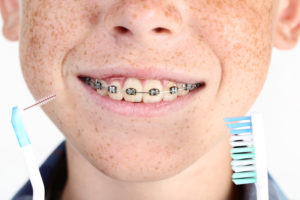
While braces have revolutionized the dental and orthodontic professions, there are some rules that a patient needs to follow to protect and get the most use out of their orthodontic appliances. Always make sure to keep your teeth clean when wearing braces. Brushing and flossing under the archwire and between the brackets is essential to remove plaque, which can easily build up on your teeth with braces. To make sure that your teeth are being cleaned entirely, replace your toothbrush every three months or as soon as the bristles are frayed. Go to all of your orthodontic appointments so that they can adjust your archwire and monitor your teeth’s movement. If you delay your adjustments, your treatment time can be increased, which can be expensive.
Even though braces are strong, you can still break a bracket or an archwire with the things that you eat. Avoid foods that can get stuck in your teeth or your braces, such as nuts, popcorn, hard candy, ice, and sticky foods like chewing gum or caramel. Try not to eat as much sugary foods as it can lead to tooth decay around the brackets, which can permanently damage your teeth. Especially for active teenagers and adults, use a mouthguard during physical activity or when playing a sport to protect your mouth and jaw from getting hurt. Following this list of do’s and don’ts will increase the likelihood of having a positive and shorter experience with braces.
Getting The Smile You Deserve
For other tips and suggestions about orthodontic appliances and which one is best for you, call Belmar Orthodontics at (303) 225-9016 for a comprehensive exam. With our team of qualified and dedicated individuals, we will provide you or your child with the best orthodontic care for a great price. Call now to learn more!
Does Your Child Really Need Braces?

We typically get our braces put on during our teenage to adult years, but how do you know whether your young child should have braces or not? Child orthodontics is a common practice for those children struggling with crooked, overlapping, or overcrowded teeth, or a misaligned jaw. There are many advantages for children as they receive braces earlier on in life as it can prevent future orthodontic treatment and guide incoming teeth into the proper position. Learn how to recognize whether your child needs braces through these tips!
When To Start
Young kids go through a lot of physical changes during adolescence, and some of those changes include jaw and teeth development. Orthodontics has become more and more common in young children to adjust certain orthodontic issues that occasionally occur as a child develops. Traditionally, orthodontic treatment begins once a child has lost most of their baby (primary) teeth and a majority of their permanent teeth have grown in, which typically occurs between the ages of 8 and 14. Even though braces is recommended at this age, it is a good idea to get an orthodontic evaluation for your child by the time they turn 7 years old; at this age, an orthodontist is able to detect early symptoms of orthodontic problems, such as an underbite or crossbite, which can cause severe complications and more treatment later on if left untreated at an early age. Bones are still growing during this age, so it is an ideal time to meet with an orthodontist to monitor bone and jaw development while evaluating any apparent orthodontic issues.
Advantages of Child Orthodontics
Although child orthodontics is only necessary if there are physical developmental issues within the mouth, receiving orthodontic treatment as a child has certain advantages. Visiting an orthodontist at an early age allows for observation of incoming teeth and reduces the risk of impacted teeth as your child loses their baby teeth and their permanent teeth take their place. As the orthodontist monitors your child’s teeth, they can help guide their teeth into the correct position as soon as they begin erupting, usually through braces or other orthodontic devices that help move teeth into the correct positions. Regular orthodontic visits also decrease the risk of hidden dental issues and permanent tooth extractions, as it allows for the orthodontist to adjust the jaw so that teeth crowding doesn’t occur.
Child orthodontics doesn’t always imply braces. Since a child’s jaw and teeth are still growing, many orthodontic issues, such as crowding, can be addressed before complications occur later on during adolescence. In this case, orthodontic treatment in young children is known as interceptive orthodontics. Many times, a child’s dental arch may be too small to fit all of their teeth. Just a few decades ago, it was a common practice to simply remove some permanent teeth to make space in the mouth. Now, though, child orthodontics can avoid this through the use of a palatal expander that expands the child’s upper dental arch, which allows adult teeth to emerge in a better position. Interceptive orthodontics can speed up the process of aligning teeth into the proper position and cause future treatment to be shorter and less involved.
How Much Does It Cost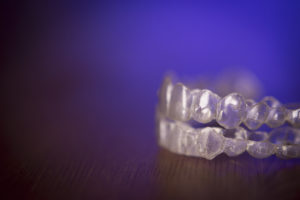
If braces are fit too early on a child, treatment can take longer and be more expensive. For this reason, it’s important to have regular orthodontic visits to monitor tooth and jaw development to ensure that whenever your child receives braces, it’s at the correct time. The braces that your orthodontist recommends will depend on your child’s type of problem that he or she has. There are three types of braces that most children will receive, and they each have different advantages and disadvantages:
- Traditional metal braces – Have steel ties holding the wires between the brackets in place. Cost is driven by what your orthodontist will charge for treatment, including multiple office visits.
- Damon braces – Do not have steel ties, but the brackets themselves hold the wires in place. Typically more expensive and can cost up to $8,000, but you pay for less dental appointments since the braces are self-ligating.
- Invisalign (or other clear or removable aligners) – Fit over the child’s teeth similar to a mouthguard. Your child will receive a number of aligners during the duration of their treatment, so cost is determined by the amount of aligners needed to achieve correction.
Just like adult orthodontics, child orthodontics can cost anywhere between $3,000 and $8,000, depending on what level of correction your child needs. If your child needs to have teeth extracted or be fitted for other appliances, the cost will most likely go up, as well. The way your child complies to orthodontic treatment will also affect the cost. Make sure that they are brushing and flossing everyday so as to avoid tooth decay, which will increase the cost of treatment as your dentist will have to treat around the braces to fix the decay.
Is It Necessary?
As mentioned before, whether your child needs braces or not at an earlier age is dependent upon their mouth structure and how their teeth form. For more information about child orthodontics or if you’re interested in scheduling a consultation, contact Belmar Orthodontics at (303) 225-9016!. Our experienced and highly trained orthodontic staff offers a variety of orthodontic treatments and technology so that you can be confident your children are receiving the best care available.
Temporary Anchorage Devices: What Are They?
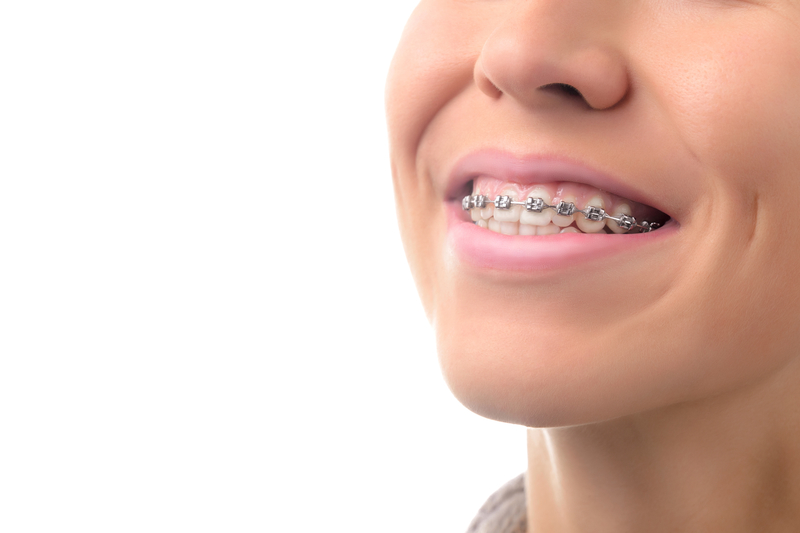
Whenever our teeth need an extra push to shift them into a straighter position, orthodontists will typically install a temporary anchorage device, commonly known as a “TAD.” Although they’re not used in every case, they help pull, push, and lift difficult to adjust teeth into the correct position. If your orthodontist recommends that you have a TAD, read through this guide to understand how they function and what you can do to maintain them!
Origins of Orthodontia
Poorly aligned jaws and teeth have been a nuisance to mankind since the beginning of time, so it’s no surprise that orthodontics has been around for so long. Archaeologists have found human remains with crooked teeth dating back 50,000 years; interestingly enough, the remains of some ancient civilizations, like Egypt, have been found with crude metal bands around their teeth, a form of orthodontics very similar to braces that we see nowadays. The ancient Greek, the Etruscans, and the Romans also practiced orthodontia and kept records of their discoveries. The ancient Greek physician, Hippocrates, was the first to describe teeth irregularities around 400 BC, and centuries later, Celcus would advise bringing newly emerging teeth into their proper position by pushing them with your fingers.
By the 1700 and 1800s, orthodontics was developing rapidly. Pierre Fauchard, the “Father of Dentistry,” would create the bandeau that allowed teeth to align correctly by using a strip of metal with regularly spaced holes that fit around the teeth. During the 20th century, Edward Hartley Angle would identify the true properties of a malocclusion, or misalignment, and begin addressing them with an effective set of orthodontic appliances that were developed much earlier. By the 1970s, braces would further advance through the invention of dental adhesives that would allow orthodontists to stick brackets to teeth surfaces rather than wiring them around each tooth. Stainless steel replaced gold and silver that were previously used as the wire, which helped reduce the cost of braces significantly. Even with the impressive advances that we have made since the beginning of orthodontics, patients around the world still suffer from advanced teeth and jaw malocclusion that normal braces can’t resolve on their own. For the purpose of increasing the effectiveness of braces, other orthodontic devices have been invented to facilitate this process.
Orthodontic Devices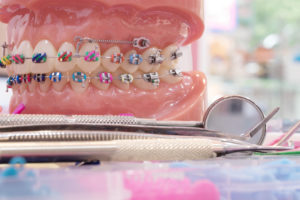
Whenever we think of “orthodontics,” we innately assume braces. Braces have two basic parts: brackets and wires. Wires move the teeth and brackets serve as a stationary holder for the wires. Contemporary braces can be stainless steel, gold-colored, or tooth-colored ceramic. Most braces go on the front of the teeth, but there are some, called lingual braces, that are fastened onto the backs of teeth that are virtually invisible. Lingual braces are not the same as clear aligners, which is another orthodontic device. Clear aligners are made of a transparent plastic-like material and are considered “invisible braces.” They are made to fit the patient’s teeth at different stages of treatment. Each set of aligners is worn for 1-3 weeks for at least 22 hours a day, and are designed to move the teeth incrementally until the next set is used. While these types of braces are a very common sight to see in many homes, schools, and workplaces, they aren’t the only devices used to move teeth and align jaws. Power chains are sometimes used with braces for an added push. They are stronger than the traditional elastic rings and can apply an extra force when needed. The last orthodontic device that is commonly used, although many patients don’t know what their purpose is, is a temporary anchorage device, or TAD.
TADs
Temporary anchorage devices, most commonly known as TADs, are used in some orthodontic cases to help shift the teeth into a straighter position when traditional braces can’t do it on their own. For this reason, not everyone needs them. TADS use titanium mini-screws (sometimes called mini-implants or micro-implants) that provide a fixed object that can be used to push, pull, lift, or intrude teeth that are being straightened. TADS don’t move and can be placed in many different parts of the mouth, so they are highly efficient at moving difficult teeth back into proper alignment. Before TADs are ever inserted into your mouth, though, your orthodontist will evaluate your teeth and determine whether your malocclusion is severe enough to receive a TAD. Before insertion, your gum tissue and jaw area will be numbed so that the procedure will be nearly painless. The TAD is then placed into your jawbone, and will eventually be removed once your orthodontist feels that it is no longer needed for straightening your teeth.
Just like braces, it may take a couple of days for the discomfort to subside and your mouth to get used to the TAD. Try taking an over-the-counter pain relief medication to alleviate any excessive discomfort. An important part of maintaining your TAD is continuing your oral hygiene regimen. Continue to brush your teeth at least twice a day and use mouthwash with antimicrobial ingredients. As long as your gums are healthy throughout the duration of your treatment, you shouldn’t have any complications with your TAD.
Get Straighter Teeth Today
To learn more about TADS, or to schedule an appointment to begin your treatment plan for braces, call Belmar Orthodontics at (303) 225-9016! At Belmar Orthodontics, we have a highly skilled and experienced team that is happy to help you start your journey to a healthier and happier smile.
Why You Should Wear Your Retainer
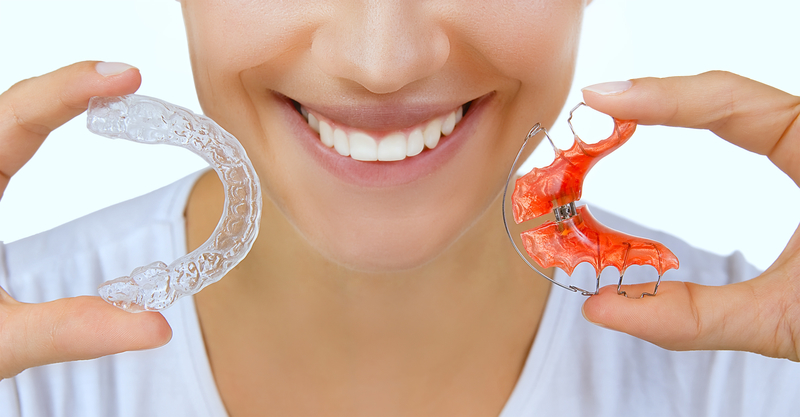
After you have your braces removed, most patients receive a retainer that they wear at night to keep their teeth from moving. But what kind of retainer should you have, and how long should you wear it? Retainers maintain oral health after braces by keeping your teeth in the correct alignment. Many people fail to use their retainers properly, and have to be fitted for braces again. Learn how to prevent your teeth from moving after braces and how to keep your teeth straight!
Purpose of Retainers
After you complete your time with braces, it will be necessary for you to consistently wear the retainer that your orthodontist advises you to wear. A retainer is an apparatus made of plastic and metal that is custom-made for each patient’s teeth and mouth. No two retainers are alike, but they all serve the same function as they seek to keep our teeth aligned properly after our braces are removed. Most people have to wear a retainer after they get their braces off, but many times people wear retainers to close gaps in their teeth, help with a speech impediment, or address specific medical issues. Retainers are especially important after your braces are removed, though, because our teeth will attempt to return to their original position after treatment. Another type of tooth movement that we want to avoid is natural physiological drift, which happens as the width of our smiles gets narrower as we age and our teeth begin to crowd. This occurs to everyone, but consistently using a retainer can prevent this shift in our teeth.
Getting your braces removed is definitely an exciting moment, but keeping your teeth straight is a lifetime effort. Our newly-aligned teeth need time to settle into our soft tissue and jawbone, and wearing your retainer helps this process be successful. Wearing your retainer at night and in between meals allows your teeth to hold their new form and prevents them from shifting back into their old position. As our bodies grow, our teeth follow suit, and retainers maintain the new tooth position that your braces achieved during your treatment. At the beginning, it may be necessary to wear your retainer all day for a few months, or you may only have to wear it at night a few times a week. Your orthodontist will advise you on how long and how often you should wear your retainer, and it is important that you follow all recommendations that you are given.
Types of Retainers
There are two main types of retainers that are used: removable and fixed. Removable retainers can be removed whenever you eat and brush your teeth, but typically must be worn full-time for at least one year after you get your braces removed. Hawley retainers are the most common type of removable retainer and is fit to your mouth shape with wires that wrap around your teeth. Invisible, or Essix, retainers are made of clear plastic that makes it look as if you’re not wearing anything, which increases its aesthetic appeal. Depending on the treatment plan you received during your time wearing braces, your orthodontist may recommend only wearing either of these two removable retainers at night. On the other hand, fixed retainers are those that are cemented to the backs of your teeth and kept in place for several years, even decades. This type of retainer is useful for those people who don’t want to worry about constantly removing their retainer or whose teeth have a higher likelihood of post-braces movement.
Caring For Your Retainer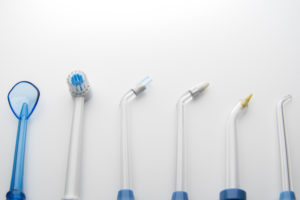
Depending on which type of retainer you use, there are certain instructions that are recommended to properly care for your retainer. For fixed retainers, regular dental checkups are essential to monitor for cavities and clean out any tartar or plaque. When flossing, make sure to use a floss threader that will allow you to go underneath the wire and clean between the teeth. As an additional measure, use a waterpik to rinse out food around the wire. Waterpiks should not replace normal flossing because floss physically removes bacteria from the teeth and gums while a waterpik merely rinses those areas. Although fixed retainers are incredibly strong, they can still break. Try to avoid biting hard foods, like carrots and nuts, with your front teeth to avoid any damage to your retainer. For a removable retainer, make sure to scrub it with soap and a toothbrush daily, or you can try soaking them in denture cleaning tablets or vinegar and water. Whenever you take out your removable retainer, make sure to keep it in a reliable case where it can be protected from pesky pets or avoid being accidentally thrown away. Don’t wear your retainer while playing sports, especially swimming, skiing, or contact sports, and make sure to avoid heat by keeping them away from hot water or hot car dashboards.
Tips For Maintaining Your Oral Health
Retainers play a vital role in keeping our teeth straight and preventing oral health problems, such as teeth crowding, but they aren’t the only recommendation for maintaining good oral health. Make sure to continue flossing and brushing your teeth daily, while visiting with your dentist every six months for a general checkup. For more information on the different types of retainers that are available and what would be the best fit for you, call Belmar Orthodontics at (303) 225-9016 to learn how to improve your smile and oral health!
Dental Emergencies With Braces

Braces are incredible devices that can help transform your teeth and reshape your jaws. However, they are not always fool-proof. Every so often, a patient will have a dental emergency. That may be a bad cavity that needs to be fixed, or a bracket or wire will break. There are only a few dental emergencies that can happen with braces. We can help you to know what to do when each of those emergencies happen!
Origins of Braces
Orthodontic treatments have been around for a long time-even as far back as the ancient Egyptians! Although their ways were archaic, people for centuries have been trying to fix crooked teeth and develop a prettier smile through orthodontic work. The ancient Greeks, Romans, and Etruscans were known to have practiced orthodontia, and interestingly, the Etruscans used to attach gold bands to women’s teeth to preserve the position of their teeth after death. Orthodontics saw a surge in progress during the 18th century thanks to Pierre Fauchard. Known as the “Father of Dentistry,” he invented an appliance called a bandeau, which was a horseshoe-shaped piece of metal with regularly spaced holes that fit around the teeth to correct the alignment. He would also use forceps to physically realign teeth into their correct positions and tie them to neighboring teeth until they healed.
Orthodontics in the United States exploded during the 19th century. J.S. Gunnell created a type of headgear that fashioned to the head and exerted a soft pull on teeth while Charles Goodyear invented vulcanized rubber which would eventually become one of the most commonly used appliances in orthodontics. But Edward Hartley Angle, the “Father of Modern Orthodontics,” took orthodontics to another level by identifying the true properties of malocclusion, or misalignment, and addressed them with his own set of orthodontic appliances in 1880. Until the 1970s, orthodontist would attach anchored brackets around each tooth with winding wires, but with the invention of dental adhesives, orthodontists could then stick the brackets to teeth surfaces. Stainless steel then replaced gold and silver as the most popular option for wires, due to its manipulability, and became the most cost-efficient option for braces.
Dental Emergencies and What To Do About Them
Braces have come a long way since their beginnings many centuries ago, but as braces have evolved, so have the problems that come with them. Although dental emergencies are few and far between when it comes to braces, there are some common issues that can be readily addressed and fixed if serious enough. The least serious issues that you can have with your braces is tooth tenderness and lip and cheek sores. As your teeth become accustomed to your braces, your teeth will most likely be sore for 2-4 days. Using headgear, rubber bands, and springs can add to this soreness, but that discomfort normally goes away in the same amount of time. Eating soft foods and taking an over the counter pain reliever can help dull the ache. Loose or broke bands and brackets are also another annoyance that sometimes occur with braces. Although not considered an emergency, they normally break due to patient’s eating prohibited foods or picking at their braces. Whenever this occurs, place a piece of wax on the spot of irritation and wait until your next orthodontic appointment, unless the broken bracket breaks on one of the upper or lower front four teeth, then call your orthodontist as soon as possible.
Protruding wires are not only bothersome, but can stab the inside of your lips and mouth if not fixed. Wires can come loose from eating sticky foods, like candy, or by picking at your braces. If this has occurred, try using a Q-tip or pencil eraser to push the wire in towards the teeth. To avoid accidental damage to the wire, make sure to not bite your nails or pens and pencils. In rare occasions, a piece of the appliance may break and be swallowed by the patient. Although alarming, keep calm and have someone look in your mouth to see if the appliance if visible. If confident that you can remove it, you may carefully attempt to do so. If you are unable to see the piece, are coughing excessively, or having difficulty breathing, that could be a sign that the piece could have been aspirated and you should contact your orthodontist immediately.
How To Protect Your Braces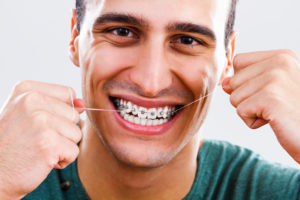
Unless under extenuating circumstances, most dental emergencies are avoidable. Maintaining good oral health and hygiene throughout your time with braces is vital in ensuring healthy teeth and gums, and preventing cavities. Food particles are easier to get stuck between braces, and when not cleaned thoroughly, can lead to other dental emergencies, like tooth decay, which can cause major complications. Hard foods, sticky foods, and foods high in sugar should be avoided as they are known to break brackets and cause cavities, which you more susceptible of developing while wearing braces. Some of the need-to-avoid foods include hard candy, nuts, apples, popcorn, ice, gum, caramel, and licorice.
Because braces are so notorious for getting food stuck in them, make sure that you are brushing after every meal to prevent staining and reducing bacteria buildup in your mouth. Use a soft brush, and brush each tooth by starting at the top and brushing down, then repeating the motion and brushing up around each bracket. Use threadable floss of a floss threader to get the hard to reach areas in between teeth that are covered by the archwire. Using the pointed end, insert between the teeth and gently move the floss back and forth between the two teeth. For added care, use a proxabrush, sometimes called a “Christmas tree brush,” to scrub between each bracket in an up and down motion to get any extra gunk that might be stuck there. For any dental emergencies that you might be having, make sure to contact Belmar Orthodontics at (303) 225-9016 for your next consultation!
Braces With Oral Health Problems
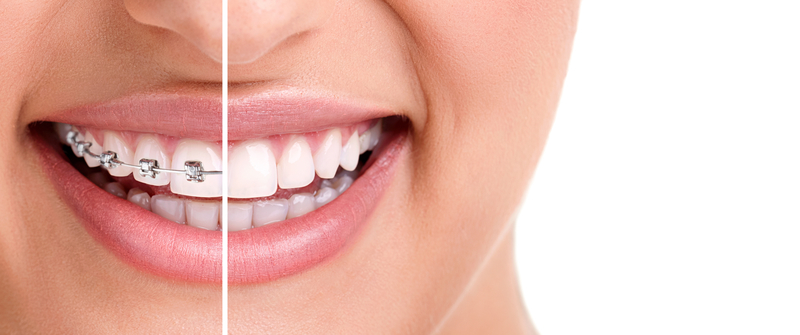
Did you know that your oral health can affect your overall health? Poor oral health can even worsen health conditions you already have such as diabetes or cardiovascular disease. That is because oral health and overall health are highly connected. Your oral issues can become better with braces, but that is only if certain oral health problems are corrected beforehand. Patients can also develop oral health problems if they don’t have the right knowledge with proper braces care. Use these tips to avoid oral health problems with braces and find out how we work around current problems to provide you with a straighter smile!
Oral Health Goals
Did you know that orthodontic treatment can give you a healthier mouth? We know that braces help straighten your teeth, but they can also improve the health of your gums and teeth. When you have crooked and crowded teeth, this makes cleaning your mouth more difficult. This can cause serious oral health problems, such as tooth decay, periodontal disease, and tooth loss. Whether you have straight or crooked teeth, before you let an orthodontist start working on you, there are some important oral health tips to be following before any work begins:
- Eat a healthy diet that limits sugary beverages and snacks
- See a dentist regularly for prevention and treatment of oral disease
- Brush teeth twice a day with fluoride toothpaste
- Floss daily
- Discuss changing certain lifestyle practices, like smoking and using oral piercings
Types of Braces
Braces are a big commitment, and you want to make sure you’re using the correct ones whenever you get them put on. Each of us is a different size and shape, and are mouths aren’t any different. Because of this, there are various types of braces for different sizes and shapes of mouths for children, teenagers, and adults. The four most common types of braces are: traditional, short-term, clear, and Invisalign/ClearCorrect.
Traditional braces are those that we see on a daily basis: a system of wires and brackets that are bonded to our teeth. This type of braces are the most cost-effective, reliable, and are best suited for severe orthodontic issues. Short-term braces are recommended for those patients who wish to align just their front six teeth-the ones that others see the most. These are used for the shortest amount of time (less teeth to align), but there is no adjustment to your occlusion (bite). So if you have a problem with an under/overbite, short-term braces may not be for you. Clear braces are similar to traditional metal brackets except that they use ceramic brackets that match the color of your teeth. These braces have a high aesthetic appeal for those who don’t want to be seen wearing braces, plus they are highly resistant to staining. Invisalign//ClearCorrect straighten your teeth without the traditional wire brackets, and are completely removable, which makes cleaning your teeth a cinch. This type requires more responsibility for the wearer, but if you’re committed to the strict wearing regimen, you can have a straight smile in as little as 12 months!
Taking Care of Your Braces
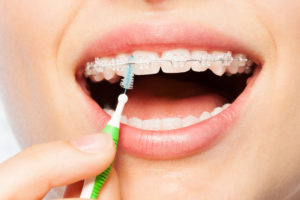
While similar to managing our oral health, maintaining our braces has a few extra steps. To maintain good oral health with braces, it’s important to adopt good oral hygiene throughout the entire process. Brushing after every meal is one of the most important but most overlooked steps in maintaining good oral health. When eating, food particles get stuck in between our teeth and our braces, which can cause staining and bacterial backup between our teeth. Using a regular soft brush in an up-and-down motion on each tooth will do the trick. Secondly, use threadable floss or a floss threader. These tools allow you to get between each tooth and underneath the wires to clean out any food that may be trapped there. Insert the threader between two teeth and move back and forth until the food is released. Lastly, use a proxabrush, or a “Christmas tree brush.” Place the proxabrush between two brackets, below the archwire, and brush up and down. Like the threader, this will also help loosen up any food that may be stuck between your teeth.
A great way to ensure that your braces don’t break and that you don’t get unwanted gunk stuck in them is to watch what foods you’re eating. Foods that are hard, sticky, or high in sugar should be avoided. Eating food that is high in sugar can cause cavities when wearing braces, which can lead to more dental work that you would need to have done. Furthermore, patients with braces should limit between meal snacks and avoid food that could bend the wires, such as caramel, nuts, chewing gum, ice, or popcorn.
When To See An Orthodontist
Now that we understand more about the importance of our oral health, plus the different types of braces, when should we make an appointment with an orthodontist? Many times, we only schedule a time to see an orthodontist whenever our teeth are crooked and we want them straightened. But there are other factors that influence when we should start thinking about getting in to see the doctor:
- Jaws that shift, make sounds, protrude, or are recessed
- Speech difficulty
- Biting the cheek or biting into the roof of the mouth
- Facial imbalance or asymmetry (features out of proportion to the rest of the face)
- Inability to comfortably close lips
- Grinding or clenching of teeth
As mentioned earlier, these are signs that your oral health might not be up to par like it should be. Meeting with your orthodontist and discussing these issues will help them better treat you with one of the four types of braces that we discussed previously. The sooner you get in to see your orthodontist, the sooner any pain or discomfort can be evaluated, treated, and extinguished.
Meet Your New Year’s Resolutions With Our Help!
Belmar Orthodontics can help you on your path towards having a straighter smiles and better oral health. With reputable orthodontists, manageable treatment plans, and services for children and adults, we can help you get the smile that you deserve! Call (303) 225-9016!
Braces: How Are They Made?

You may wonder what the differences are between metal, ceramic, and lingual braces and how they compare to Invisalign treatment. All are a bit different and they are both made and worn differently. Braces are made from various materials and designed specifically for your mouth.
Metal Braces and Your Teeth
You’ve likely seen someone wearing metal braces and you know that they make your teeth straighter. But how? It takes a bit of science and the right orthodontic appliance to make that beautiful smile happen. With the most common type of braces—metal braces—you have a stainless steel material that is shaped into specific orthodontic parts that will all go together in your mouth. Often those parts are molded and shaped in a special lab that then ships those parts to orthodontists.
Labs will even do custom-made brackets and wires for patients when the need arises. However, most braces have a specific design like metal braces do. Metal braces have several parts that include:
- Brackets: These stainless steel pieces are those little squares bonded to the middle of each tooth. We use a special bonding glue that will stay on your teeth for the entire duration of your treatment, but will come off easily with the right orthodontic material. Your brackets are small anchors that hold a wire in place. They will have tiny rubber elastics placed around them to protect your teeth and prevent stuck food.
- Archwire: This metal wire will pass through the brackets on each tooth, all the way to the back of your mouth. Many patients have a bracket that wraps around the back molar that stabilizes this archwire. The wire will follow the curve of your jaws in an elongated have circle. When a thicker archwire is placed or when this archwire is adjusted, it can help move the teeth into place because of the force placed on the brackets.
- Ligature Elastics: These are the rubber elastics we mentioned. The elastics are what keep the archwire sturdy so it can straighten your teeth.
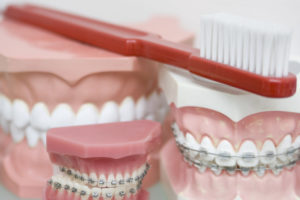
How Teeth Straighten
Your archwire will be adjusted very slightly at your orthodontic appointments every 4-6 weeks. That slight adjustment may seem very small, but it’s what your mouth needs to make a true, straightening change. The appliance is not the only thing changing your teeth into a straighter position. Your teeth are the hardest substance in the body and can even be harder than many metals. Straightening them would seem very difficult, when it’s not. It simply takes time.
Your teeth can take a ton of force from chewing, biting, eating, talking and other actions because they are rooted into your jawbone. However, the jawbone is much weaker than the teeth are. So why doesn’t your jawbone get breaks in it when you chew hard things? You have something called the periodontic ligament that is around every tooth root as it goes into your jaw bone. All those ligaments are shock absorbers for your jaws when you chew, minimizing the force your jawbones take. These are key to straightening the teeth.
When orthodontic appliances are on the teeth, they will apply a very slight pressure to your teeth and to the periodontic ligaments that surround them. When that pressure is constantly there, your body will produce acids in the jawbone area that will break down tiny parts around the teeth. With new space created, the teeth can shift. Your body will naturally deposit more minerals in areas that have changed to strengthen the jawbone once more. Over time, your jaw is literally breaking itself down on a microscopic level and then rebuilding itself. That is why orthodontic treatment takes months. However, the result is worth it.
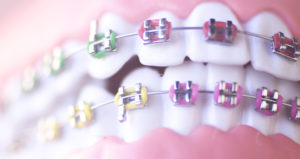
Ceramic and Lingual Braces
Ceramic and lingual braces are very similar to traditional metal braces, but are made a bit differently. Lingual braces are also a metal braces type, and most types are made from stainless steel in a lab. There can be other types of metal used or a combination of metals. These braces will have brackets and wires just like traditional metal braces, except that they will be placed on the back of a patient’s teeth.
Because of placement, children are not usually candidates for lingual braces because of the size of the teeth. Dental impressions of the back of the teeth are made so that metal coverings can be made for the tooth backs, which is a bit different than traditional metal braces. More anchoring is needed with lingual braces, and this is how it is done. The metal material will cover the entire tooth back with a bracket in the center of the tooth, and each is placed individually when a patient gets their appliance. The archwire works the same as other braces.
Ceramic braces are very similar to metal braces in their design and how they work. However, they are made from ceramic material, which is naturally white already. This makes the braces blend in with the teeth more, and the metal can even be frosted to blend in with whiter teeth.
Invisalign: Customized to the Patient
Invisalign treatment is an orthodontic option that is vastly different than your other options. The most noticeable difference is that there is no metal or ceramic material in your appliance. A patient will have digital images taken of their mouth. With that image, custom aligners are made that a patient will switch out each week. These are a type of plastic material patented by the Invisalign company. It’s a strong enough plastic to cause the same type of shifting you want your teeth to do. Aligners fit snug in the mouth as they are custom made, are switched out each week, and must be worn 20-22 hours of the day. If you are interested in any of these types of braces or want to see how the braces are put on a patient, call Belmar Orthodontics today at (303) 225-9016 with your questions!

